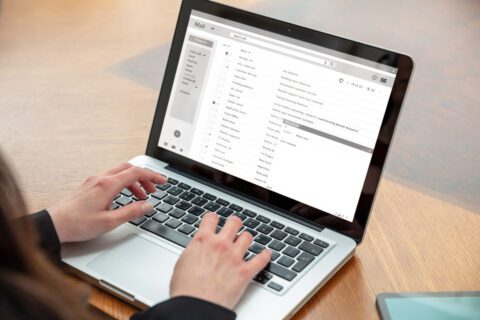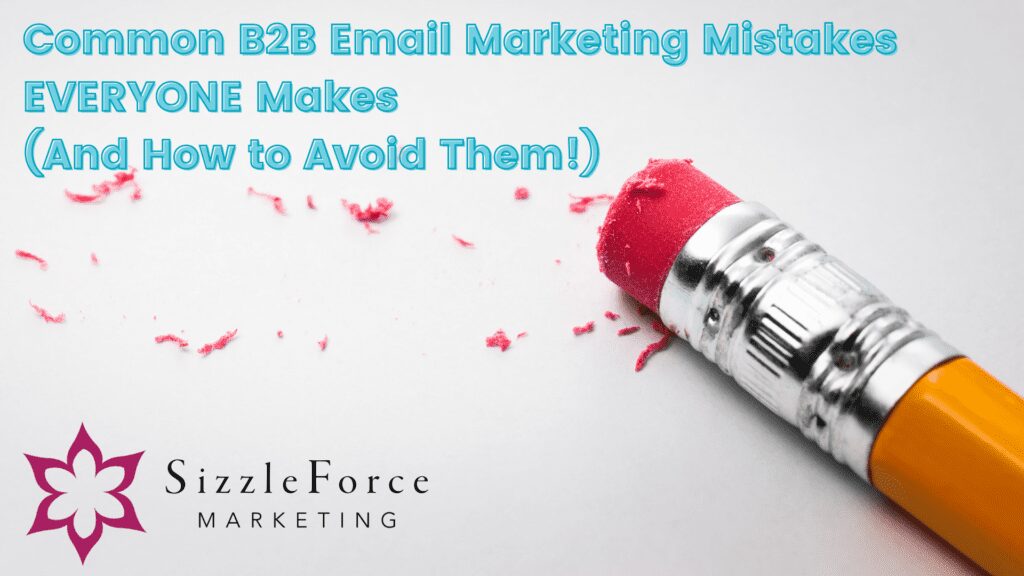

If your audience consists of business owners, they’re not just savvy customers: as people with their own projects to market, they can be downright skeptical.
B2B email marketing can be tricky. Along with the more common mistakes you can make in B2C email marketing, now you have an additional layer of challenges associated with trying to market to a business.
It’s rough.
But luckily for you, we have done some digging and found the most common, frustrating, and annoying mistakes you can make when trying to utilize B2B email marketing, and we’re going to share them with you so you can avoid making them in the first place.
1. It’s time to segment those email lists


Segmenting your email list means sending targeted emails to specific groups of people. You can segment by job title, industry size, or company size. This is incredibly important if you’re marketing multiple products to different levels of businesses. The more specific and targeted you can be with your email marketing campaign, the more likely you are to see success.
For example, a CEO of a 7-figure company probably isn’t interested in your email about how to run a 6-figure business.
Know your audience and write to them! If you have multiple audiences, segment those lists! Don’t get too crazy with it, though. According to Mailchimp, focusing on a few broad groups is your best strategy.
2. Give them a reason to open that email


Let’s talk about subject lines –
“Oh boy, here they go with the subject line thing again. Next thing you know, they’ll talk about CTA’s”.
If you’re a fan of our blog, you’ve probably noticed we talk about this all the time. But the truth is, if you want to have increased open rates, it is essential to make sure that you treat your audience to a compelling subject line.
For your emails to be effective, people have to open them. In B2B, we can be especially creative with this if your lists are already properly segmented.
3. You can bet your bottom dollar we’re talking about CTAs


We wrote an entire blog on CTA buttons. In every marketing advice blog we write, we talk about the importance of a call to action. It’s because the CTA is your elevator pitch. It is your only chance to convince your customers that your product is right for them.
So much pressure rides on that CTA. It’s as important as (if not MORE important than) your subject line.
4. If it’s not optimized for mobile, you’re missing half your audience


You’re sitting at the dinner table. You get an email alert.
Ding-Ding.
“Hold on, honey – I have to check that.”
Now, chances are, you’re probably not going to get up, walk to your computer, open it, enter your password, open your browser, log into your email account, and check what that “urgent email” you just received was.
Instead, you’ll click the two buttons on your cellphone to look in your inbox and scroll through and see if it’s an important message.
More and more people are using their cell phones instead of their computers to check their email. So if your email’s design and length aren’t optimized for that audience, you’ve alienated some potential customers.
Optimize your emails for mobile, folks! We live in the future.
5. Stop blowing up your clients’ inbox


No one likes having their inbox blown up. That’s why it’s important to balance keeping your audience engaged versus annoying potential clients to the point that they unsubscribe or even mark you as spam.
Depending on your reason for sending an email – one to two emails per week is probably your safest bet. If you’re using a sequence or engaging with clients for a specific reason, you may send two or even three. But only send that many for specific circumstances (abandoned cart sequences, upcoming sales, etc.).
6. 👏 Test 👏 your 👏 emails!
Come close. We have to tell you a secret:
If you aren’t testing your emails, embarrassing mistakes will happen.
It’s not a matter of if. It’s a matter of when. Even the most polished and carefully inspected emails can have a broken link or a comma in the wrong place that you don’t spot until it’s too late. Mistakes like this can lower your authority and reduce the effectiveness of your email campaigns.
Test it by sending it to an internal email and getting someone to test those links; check that grammar and ensure your email is squeaky clean before your customers see it.
7. No one wants to open an email from “[email protected]”


First of all, [email protected] if you’re out there: nothing personal.
It’s just that professional email addresses are an important part of ensuring that your emails make it to your client’s inbox.
Using a professional email address, such as “[email protected],” will build authority with your readers and make them feel they’re not in danger of getting a virus when they open your messages.
8. They’re subscribed, right?
If you’re sending emails to a list you bought, chances are that most of your list didn’t even get an opportunity to opt-in. This is the exact opposite of curating your list.
While sales is a numbers game, you’ve created a situation where your emails can be perceived as spam by not curating your list.
That means lower open rates, less deliverability, and a lower likelihood that clients who could benefit from your services are even seeing your emails in their inboxes. Ask people to subscribe, and your deliverability will be safe.
9. Not providing an opt-out option
We know it’s scary. Providing an opt-out option allows people to say, “Nah, I’m good,” which means fewer sales opportunities.
But as business owners are frequently overwhelmed with emails and spam, they may just mark your email as spam to lessen the number of emails they have to sort through.
Being marked as spam: not so good for delivery rates. So give your readers the option to opt-out so your lists can stay clean and you don’t have problems reaching new subscribers.
After all: the last thing you want is for the people who want your emails to have trouble receiving them.
Feeling overwhelmed by the potential for error?


Email marketing alone is already a technical minefield. When combined with the challenge of B2B marketing, it can become overwhelming quickly. How can you find time to clean your email lists, develop clever email campaigns, and write compelling copy?
You need a marketing team who can capture the spirit of your business, increase conversions and take care of your marketing needs.
Hmm…where can you find one of those?
Oh wait, we’re one of those! If you’d like to discover what SizzleForce Marketing can do for you, don’t wait! Schedule a free consultation call today!

